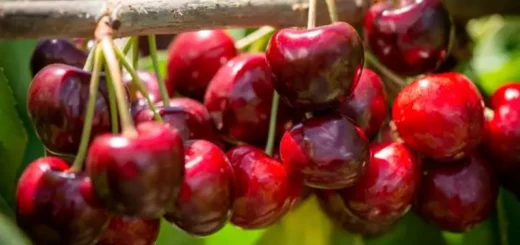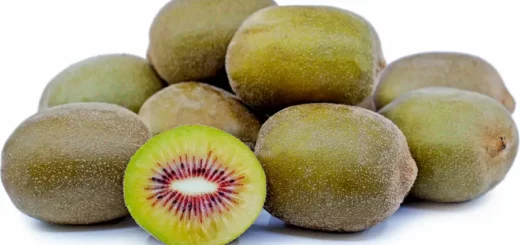Grass-fed and global — Exporter Magazine

Beef + Lamb New Zealand represents the interests of 12,000 Kiwi farmers on the world stage and works hard to build awareness of this country’s grass-fed beef and lamb in overseas markets. By Colin Bass and Glenn BakerTo understand how New Zealand beef and lamb is sold here and overseas, it is important to understand the roles of three key stakeholders involved. First and foremost there are the 12,000 farmers who grow New Zealand’s highly sought after grass-fed beef and lamb. Secondly, there is the essential commercial sector built up over many years that processes the meat into valuable product for consumption and ship it internationally. Thirdly, and in the interesting position of not actually physically selling the product itself, is Beef + Lamb New Zealand. Its role is to be the influencer, enabler and partner to the commercial sector in helping those 12,000 farmers get the greatest return on investment for their produce.Craig Finch, GM market development of Beef + Lamb New Zealand, explains the concept of ‘market failure’ as it relates to the organisation’s role. “For any one farmer or commercial operator to go it alone and take on the international market, it’s just not feasible. It would result in significant lost opportunity abroad. Our role is to work with processors on behalf of farmers, and in doing so present New Zealand’s sought after meat in a co-ordinated way globally,” he says.“Each market is different so it’s critical to invest in research and branding to make sure you hit your mark. We’ve done this in partnership with the commercial sector and New Zealand Trade and Enterprise. It’s especially important in the emerging markets of Asia where each market has its own cultural nuances. For example, in Japan the consumer is really focused on food safety; whereas in say Korea, the focus is on nutritional value. Recently we reviewed our progress in these countries and as a result have tweaked our messaging,” explains Finch of the huge responsibility his team bears in getting things right.Markets are split into two key types: established and emerging. The established markets are primarily the EU and the US where New Zealand has significant quota access for sheepmeat and beef, respectively. Beef + Lamb CEO Scott Champion explains the experience in the EU. “The lamb quota for the EU currently sits at 228,000 metric tonnes. With the EU’s expansion over the last decade or so, it’s been critical for Beef + Lamb to support a continued preference and premium positioning in this sophisticated market for New Zealand lamb.”Champion has a plastic McDonalds Big Mac sitting next to his computer screen. This reflects the importance of the US as an established market for New Zealand beef and lamb. “Our beef quota for the US is 213,000 metric tonnes. A large part of this is what the market calls manufacturing beef. Essentially this means mince that goes into hamburgers. New Zealand’s grass-fed beef plays a vital role in making America’s great hamburger. New Zealand beef is mixed with US grain-fed beef; the final mix providing the texture and nutritional value now established as the required standard,” explains Champion.Grass-fed beef is rich in iron, omega 3 and zinc yet remains very lean. This is New Zealand’s competitive advantage. With most other developed markets having a high concentration of grain-fed animals due to land availability, and with an increasing focus on nutritional goodness from consumers, the strength of New Zealand’s international position is obvious.
Emerging markets
Established markets are balanced with the emerging markets of the Asian theatre – and, as is becoming the case for many exporters in New Zealand, China tops the list. Not restricted by a quota system and with the help of New Zealand’s free trade agreement, the future looks extremely positive for beef and lamb exports to China.Finch reflects on the experience to date. “China has previously been a market for low value cuts, mostly lamb flaps. This is changing rapidly as the amount of disposable income grows and the Chinese consumer becomes more discerning. China is now our second largest market in terms of volume and third largest from a value perspective. China, along with other Asian markets such as Korea, is just going to become more and more important.”When asked about the organisation’s role in adding value to processed meat for a better return, Champion again reflects on the partnership and role of the industry’s commercial operators. “The commercial sector is responsible for product development and is actively looking at opportunities for more valuable cuts and new proprietary branding opportunities. However, it can be a frustrating game as often when value is added to our meat, creating a new processed product, it attracts greater tariffs which can make a venture uneconomical. So it’s a balancing act.” The efforts of Beef + Lamb New Zealand on the local market are obvious with high profile advertising and ambassadors such as the ‘Iron Maidens’ conveying a powerful message. Naturally the efforts offshore aren’t so apparent here. But given the sophistication of Beef + Lamb’s approach to international business development, both the 12,000 farmers the organisation represents and the commercial sector it partners with can justifiably be proud to be associatedwith such a great New Zealand marketing body.
Koreans get a taste for our beef
Walk the streets and alleyways of busy, bustling Seoul and you’ll be amazed at the number of traditional BBQ-style eating houses. The South Korean people love dining out, and meat is a focal point of many of their meals.It’s not surprising therefore, that South Korea is high on the radar of Beef + Lamb New Zealand as an emerging market – and it has been making serious inroads there. The secret ingredient of course, is no secret at all – it’s pure New Zealand grass.“Our strategy has been to differentiate the grass-fed nature of New Zealand beef from the grain-fed product from both domestic Korean and overseas sources other than New Zealand which dominates the Korean beef market,” explains John Hundleby, market manager – Japan and Korea for Beef + Lamb New Zealand. “That has involved an ever-increasing focus on the nutritional merits of grass-fed beef vis-à-vis grain-fed product.”While South Korea is a very small market for lamb, with Koreans unfamiliar with the meat, New Zealand’s beef exports to the country are significant. Apart from 2011-12, when Japan overtook South Korea as the second largest export market for New Zealand beef, Korea has consistently (since 2003-04) maintained that number two position (after the US).The banning of US beef imports in December 2003 due to the BSE scare afforded New Zealand (and Australia) a welcome opportunity to fill the void. US beef had until then been the predominant foreign beef in the Korean market.During the 2003-04 production year (beef export statistics are based on an October to September production year) New Zealand exported 51,589 tonnes of beef to South Korea compared with 28,521 tonnes in 2002-03. The peak volume was 52,280 tonnes in 2004-05, with volumes above 40,000 tonnes most years since. Hundleby says the volume supplied during 2011-12 was 33,516 tonnes – the lowest volume since 2002-03 – “reflecting quite a lot of disruption in the Korean beef and broader meat market during the year, as well as strong competition from other destinations for New Zealand beef”.An education processHundleby says one of the real pluses Kiwi food exporters have in Korea is that New Zealand enjoys a very positive country image among Koreans in general and there is no reluctance to engage with us. Grain-fed beef is the product Koreans are more familiar with and it is something of an uphill battle to get them to accept that grass-fed beef (as with lamb, there tends to be a perception based on nothing more than hearsay that the meat is tough, smelly and doesn’t have a good taste) is a genuine alternative to grain-fed beef, he says. “However, once we get Koreans to actually try the product during activities like sampling at trade exhibitions, in the vast majority of cases we receive a very positive reaction concerning the taste and texture of the beef, as well as its suitability for the Korean market.”In both Korea and Japan, Beef + Lamb NZ undertakes a broad range of promotional activities, worked out in consultation with leading New Zealand exporters and their key customers.“The two markets are in many aspects quite different and thus activity programmes contain markedly different components,” says Hundleby. “However, one common theme is the strong emphasis on the nutritional merits of New Zealand grass-fed beef: particularly on what we call the “three-lows” – low calories, low cholesterol and low fat; the high level of a number of essential minerals and vitamins compared to grain-fed beef; and the highly desirable Omega 3/Omega 6 ratio.“This emphasis on health and nutritional messaging is aimed at increasingly health-conscious groups within the two countries – for example, mothers concerned about the health of infants and young children; the middle-aged; and more elderly wives worried about the nutritional merits of their own diets and their husband’s.” Marketing activities include trade expo participation, sampling booths at major consumer events and festivals, seminars, co-operative promotional events with retail and food service companies, activities involving professional chefs’ organisations, cooking demonstrations and advertising campaigns, and a range of other activities. An ever-growing component of activities in both countries is either partially or fully online focused, says Hundleby, reflecting the burgeoning IT capabilities of both Korean and Japanese consumers.Colin Bass is a Nelson-based freelance writer. Email
colin@businesslab.co.nz
Glenn Baker is editor of Exporter.
Publishing Information
Magazine Issue
Exporter Magazine Mar/April 2013 issue 27







